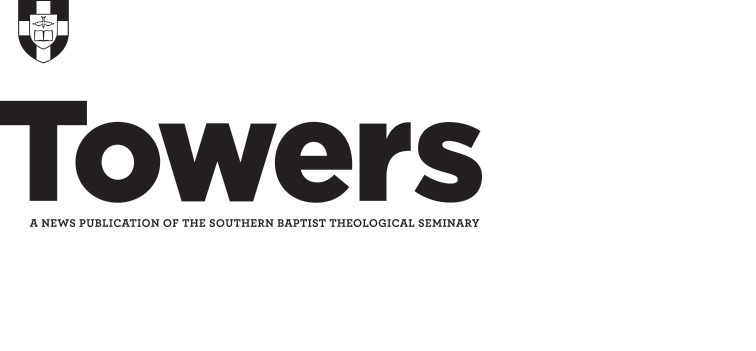Christian engagement with the dramatic arts is a relatively recent phenomenon that correlated with the introduction of motion pictures and television. For centuries, pastors and theologians gave multiple reasons for the prohibition of the theater — reasons that ranged from idleness and distraction from God, to perceived danger to women for whom plays and romances provide an avenue from which they may take a “romantic disposition of mind,” the abomination of men crossdressing for the stage. Plays also featured crass jokes, lewd comments, and plenty of immoral content, they said.
William Law noted that even if a particular stage production wasn’t lewd, a Christian would be perpetuating and promoting immoral productions by attending. A tract from 1820 cautioned its readers that Christians are on a “world stage,” arguing that aside from the corruption of mind, their witness could be damaged. This concern of damaging witness by theater-going was echoed over 75 years later when E.L. Willis published an account of an actress who quit the stage in the middle of her lines once she saw a Christian lady in the audience and said that she would not return to the stage “as long as that old hypocrite is there.” (( Murray, Lindley. Extracts from the Writings of Divers Eminent Authors, of Different Religious Denominations; and at Various Periods of Time, Representing the Evils and Pernicious Effects of Stage Plays and Other Vain Amusements, 1799, references in respective order: 1 Pascal, pg. 4; 2 Prince Conti, pgs. 5-6; 3 Archbishop Usher, pg. 10; 4 E. L. Willis, Social Amusements, 1896, pg. 19; 5 Lindley. Extracts, William Law pg. 13; 6 New York Methodist Tract Society. Tract No. 11, A Serious Address to the Frequenters of Theatres, 1820, pg. 12; 7 Willis. Social Amusements, pgs. 19-20. ))
Among nineteenth-century Southern Baptists, T.T. Eaton, pastor of Louisville’s Walnut Street Baptist Church (1881-1907), wrote a pamphlet on “The Theatre and Its Influence.” Eaton acquiesced, “Let it be admitted at the outset that the drama is ‘a fine art,’ and, under proper conditions, could be made the means of instruction and edification to the people. Alas! that those conditions have never been fulfilled, and there is no prospect that they ever will be.” Eaton prohibited the patronage of the theater, however, since contemporary plays were wrought with immorality. He noted of Shakespeare’s plays, “The aim of the great master of the drama was not to elevate or reform mankind, but to paint life as it actually existed around him. Since this life was wicked, the picture he drew was, of course, dark.” Eaton also argued that, “The influence of the drama is clearly seen in the increased ease and frequency of divorces and in the many scandals which occupy so large a part of the daily press.” (( T. T. Eaton, The Theater and Its Influence, 1870s, pgs. 1, 6, 14-16, 19-20. ))
These same arguments were used into the 1920s for both modern theater and the new moving pictures. The content — language, jokes, themes, and even the actors’ and actresses’ off-screen and off-stage lives — was used as moral oppositions for dramatic entertainment. Speaking of the modern theater and motion pictures, SBTS former student (1902-03) and New York City preacher, John Roach Straton, wrote, “When I see the moral filth upon which they are regaled in the playhouses, I cannot but feel that the theater as it exists today is one of the deadliest menaces to the … good order of our homes and the health of civilized society in its every branch.” In fact, perceptions that moving pictures contributed to rising divorce rates was cited as a specific concern at the 1921 Southern Baptist Convention during which the Social Committee contended, “We must not allow this factor to be devoted to evil; it should be harnessed for harmless amusement, for education and for the Kingdom of God.” This statement, particularly the phrase “harmless amusement,” demonstrates the potential for eventual engagement of secular moving pictures.
The discussion of engagement with dramatic entertainment continued through the decades which culminated in a resolution approved by the 1972 SBC annual meeting titled “On Offensive Movies and Television Programs,” which stated the attendees resolved that:
We endorse movie production and television programming which provide wholesome entertainment and that we vigorously oppose that which undermines the moral values and ideals… we call on Southern Baptists to communicate appreciation to producers, networks, and sponsors for movies and television programs that are morally wholesome…we call on Southern Baptists to express themselves in opposition to the showing of offensive movies both in theaters and on television through letter writing, newspaper ads, and a concerted call to legislators for clear legislation that will prohibit the exhibition of obscenity either in movies or television. (( Straton, John Roach, Fighting the Devil in Modern Babylon, 1929, pg. 65. Annual of the SBC, 1921, pgs. 82-83; Annuals of the Southern Baptist Convention may be seen digitally at http://www.sbhla.org/sbc_annuals/index.asp. Of particular note: 1920, pg. 126; 1922 pg. 99; 1926 which records the purchase of a moving picture machine by the Home Mission Board on pg. 320 and a motion picture on the work in the mountain schools on pg. 98 premiered at the Convention; 1935 pgs. 63-65 note the use of pledge cards to not watch illicit motion pictures as well as statements on the impact of motion pictures produced in the United States exported to other countries having a negative impact on international mission work; this latter issue is noted again in the Annual of the SBC, 1936, pg. 24. In 1948 a protest the number of scenes in which alcohol was present as well as a commendation for the Protestant Film Association was made on pgs. 53-54. Annual of the SBC, 1972, pgs. 74-75. ))
Southern Baptists, for over a century, have had to reevaluate their stance on dramatic entertainment due to technological advances. They have gone from strict prohibition to careful engagement.
FOOTNOTES




